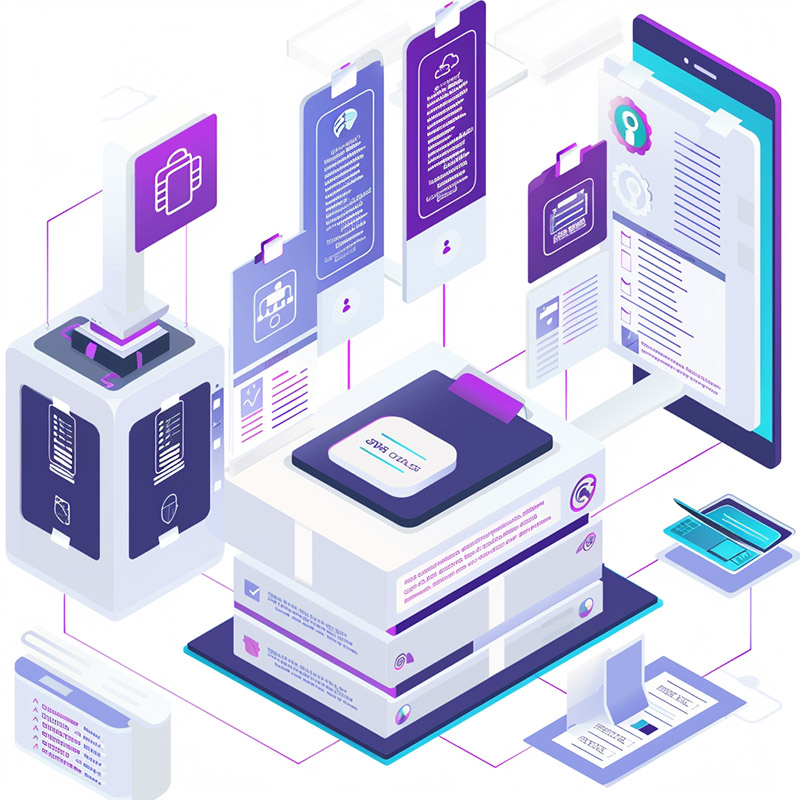1. Predictive Data Management
AI algorithms can forecast future data storage needs by analyzing trends and usage patterns, enabling proactive expansion or optimization of storage resources to meet demand efficiently.

Data Management Before AI
Organizations often struggled with reactive data management strategies, leading to either insufficient storage capacity during critical times or overinvestment in unused storage resources. This lack of foresight hindered operational efficiency and scalability, impacting overall performance.
Data Management After AI
With AI-driven predictive data management, organizations can now anticipate future storage needs with remarkable accuracy. AI analyzes historical data usage patterns and growth trends to forecast future requirements, enabling proactive resource allocation. This ensures optimal storage availability without unnecessary expenditure, significantly enhancing operational efficiency and readiness for scale.
2. Enhanced Data Compression
AI-driven techniques can significantly improve data compression ratios without loss of quality, allowing for more efficient use of storage space by identifying and eliminating redundancy in stored data more effectively than traditional methods.

Data Compression Before AI
Traditional data compression techniques were limited in their ability to reduce file sizes without compromising data integrity, often resulting in either inadequate compression or loss of important information. This inefficiency led to increased storage costs and slower data retrieval times.
Data Compression After AI
AI-enhanced data compression algorithms achieve significantly higher compression ratios while maintaining data integrity. By intelligently identifying redundancy and optimizing compression techniques, AI enables more efficient use of storage space, reducing costs and improving data retrieval speeds without sacrificing quality.
3. Automated Data Tiering
AI can automatically categorize and move data across different storage tiers based on access frequency, sensitivity, and regulatory requirements, optimizing storage costs and performance.

Data Tiering Before AI
Manual data tiering processes were labor-intensive and prone to human error, often resulting in suboptimal data placement that could affect access times and increase storage costs. Organizations struggled to balance cost and performance effectively.
Data Tiering After AI
AI-driven automated data tiering dynamically categorizes and relocates data across different storage tiers, from high-performance SSDs to cost-effective archival solutions, based on usage patterns and business rules. This intelligent allocation optimizes storage costs and access times, significantly improving data management efficiency.
4. Intelligent Data Deduplication
By intelligently identifying duplicate pieces of data across systems, AI can reduce storage requirements and improve efficiency, ensuring that only unique data instances are stored.

Data Duplication Before AI
Data storage systems often contained multiple redundant copies of data, leading to unnecessary storage consumption and increased costs. Manual deduplication efforts were time-consuming and often incomplete, leaving significant inefficiencies unaddressed.
Data Duplication After AI
AI-powered intelligent data deduplication systems identify and eliminate duplicate data across the storage landscape with unprecedented accuracy. By ensuring that only unique instances of data are stored, AI significantly reduces storage requirements and associated costs, while also streamlining data management processes.
5. Real-time Data Analysis and Storage
AI enables the analysis of data in real-time, deciding instantly which data should be stored for long-term use and which can be discarded, streamlining data storage processes and prioritizing valuable information.

Data Storage Analysis Before AI
Decisions on which data to store and which to discard were often made based on manual policies and periodic reviews, resulting in the potential loss of valuable information or the unnecessary retention of irrelevant data.
Data Storage Analysis After AI
AI enables real-time analysis and decision-making about data storage, instantly identifying valuable data for long-term storage and discarding transient information. This not only optimizes storage usage but also ensures that critical data is preserved and readily available, enhancing decision-making and operational agility.
6. Self-healing Storage Systems
AI can monitor storage systems for failures or anomalies and initiate corrective actions without human intervention, minimizing downtime and ensuring data integrity and availability.

Storage Failure Before AI
Storage system failures or degradations required manual intervention for diagnosis and repair, leading to potential downtime and data accessibility issues. This reactive approach to maintenance was inefficient and could result in data loss or prolonged service interruptions.
Storage Failure After AI
AI-driven self-healing storage systems continuously monitor for anomalies or failures, automatically initiating corrective actions to address issues before they impact users. This proactive maintenance reduces downtime, enhances data availability, and ensures a more reliable storage infrastructure.
7. Energy-efficient Storage Solutions
Through the optimization of data storage and retrieval processes, AI can reduce the energy consumption of storage systems, contributing to more sustainable and cost-effective data management practices.

Storage Energy Use Before AI
Data storage infrastructures were significant energy consumers, with little regard for optimizing energy use, leading to high operational costs and larger carbon footprints. Energy efficiency was often an afterthought, resulting in wasteful practices.
Storage Energy Use After AI
AI optimizes data storage operations for energy efficiency, intelligently managing data placement, access, and hardware usage to minimize energy consumption. This not only reduces operational costs but also supports environmental sustainability efforts, aligning data storage practices with green initiatives.
8. Advanced Security and Encryption
AI can enhance data storage security by identifying potential threats in real-time and automating the encryption process, ensuring that data is protected against unauthorized access and cyber threats.

Storage Security Before AI
Ensuring the security of stored data was a complex, resource-intensive process that often lagged behind evolving cyber threats. Manual encryption practices and security monitoring were insufficient to protect against sophisticated attacks, posing a constant risk to data integrity.
Storage Security After AI
AI enhances data storage security by dynamically analyzing threat patterns and automatically applying encryption protocols to protect sensitive information. Real-time monitoring and adaptive security measures significantly reduce the risk of breaches, ensuring a robust defense against emerging cyber threats.
9. Storage Performance Optimization
AI algorithms can continuously monitor and adjust storage performance settings in real-time based on current workloads and access patterns, ensuring optimal performance across diverse applications.

Storage Performance Before AI
Storage systems often operated under suboptimal conditions, with static configurations that could not adapt to varying workload demands. This resulted in performance bottlenecks and inefficient resource utilization, impacting user experience and operational productivity.
Storage Performance After AI
AI-driven storage performance optimization continuously analyzes workload patterns and adjusts configurations in real time to meet demand. This ensures optimal performance across diverse applications, enhancing user satisfaction and maximizing resource efficiency.
10. Automated Compliance Management
AI can help manage data compliance with various regulations by automatically classifying data, enforcing retention policies, and facilitating secure deletion, reducing the risk of non-compliance and associated penalties.

Data Compliance Before AI
Managing data compliance was a manual, error-prone process fraught with the risk of non-compliance penalties. Organizations struggled to keep up with evolving regulations, leading to potential legal and financial repercussions.
Data Compliance After AI
AI streamlines compliance management by automatically classifying data according to regulatory requirements and enforcing appropriate retention policies. This reduces the risk of non-compliance, automates labor-intensive processes, and ensures that organizations can confidently meet regulatory obligations.